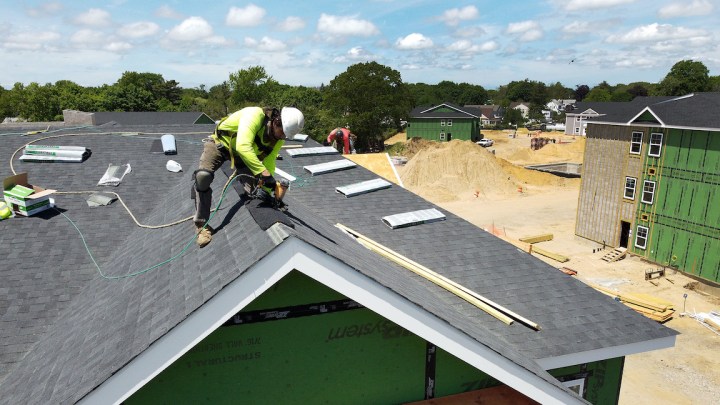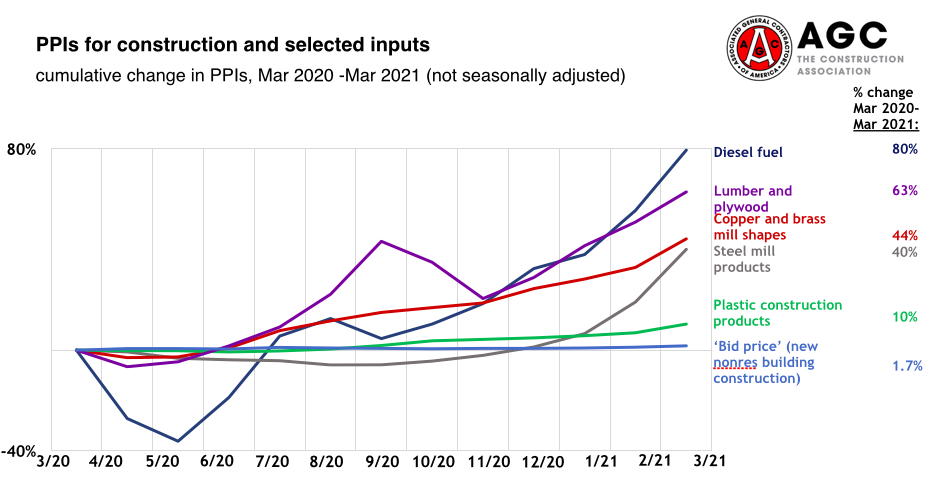
Lumber isn’t the only thing that’s getting more expensive for contractors
Lumber isn’t the only thing that’s getting more expensive for contractors

We’ve been talking a lot lately about the inflation that’s likely as the economy recovers from the pandemic recession.
We’re seeing it in the consumer price index, which measures what we pay for stuff, and also in the producer price index, which measures what businesses pay for materials they put into their finished goods; in March, it was up 4.2% year over year, the biggest jump since 2011.
It’s playing out dramatically in one industry in particular — construction.
Earlier this week, we reported on why the price of wood is so high.
But it’s not just lumber, up 200% year over year, said economist Robert Dietz at the National Association of Home Builders. “Just about all input prices are rising right now in the construction industry.”
Diesel’s up 80%, milled copper and brass are up 44%.

“It’s all the literally nuts and bolts — we’re hearing about delays or shortages or price increases from gypsum that goes into drywall, steel brackets to help lay down the concrete foundations for homes,” Dietz said
What’s driving all this?
“Stressed supply chains — particularly at the global level, and just the very hot housing market that desperately needs additional supply,” he said.
Rising costs could hamper the recovery for commercial contractors and their clients — developers and government agencies that order up new buildings, according to Kris Lengieza at construction management software firm Procore.
“Does this make financial sense any more for me to do this project? Maybe I need to scale it back. Maybe I need to not do it all,” Lengieza said.
Builders of homes generally shift higher construction costs on to buyers — lumber inflation alone has added $24,000 to the price of a new home.
“The affordability hurt will be with the first-time buyers, where they have to save up for a down payment from their paycheck,” said Lawrence Yun with the National Association of Realtors. That buys less and less house every month.
The median price of an existing home just topped $329,000, the highest ever. A new home will set you back about $20,000 more.
There’s a lot happening in the world. Through it all, Marketplace is here for you.
You rely on Marketplace to break down the world’s events and tell you how it affects you in a fact-based, approachable way. We rely on your financial support to keep making that possible.
Your donation today powers the independent journalism that you rely on. For just $5/month, you can help sustain Marketplace so we can keep reporting on the things that matter to you.

















